Chemical peeling is an effective procedure for renewing skin cells of the face and body, after which natural mechanisms are activated. As a result, the skin becomes more elastic, hydrated and soft. However, during the rehabilitation period, the skin looks completely different from what girls initially imagine. After all, peeling, first of all, is an aggressive effect and trauma to the skin. After the procedure, you must follow the rules for facial care.
Girls often ask whether it is possible to use their usual care, and on what day after peeling they can use foundation. In addition, there are many more important aspects, the observance of which allows you to achieve the desired result after peeling.
What happens to the face after peeling
The trauma to the skin after peeling is quite deep and serious, so the skin experiences severe stress for some time. Regardless of the method of exposure - laser, chemical or ultrasound, a powerful regeneration process is launched at the cellular level, which is aimed at smoothing out the consequences of the injury. Visually, this manifests itself in the healing of scars and cicatrices, lightening or complete disappearance of spots. Due to the fact that many new young cells were formed during this period, and the old layer was removed through exfoliation, the skin becomes elastic and velvety.
In the first days after peeling, the skin is very vulnerable to external irritants, so even washing should be as delicate and gentle as possible. You should not use tap water, as there is a high risk of infection with further complications.
The natural reaction of the skin to peeling is skin tightness and the formation of a dry film, which gradually cracks and disappears from the face. Usually this stage occurs on the third day after the procedure. It does not look aesthetically pleasing, but from the point of view of skin renewal, it is a necessary process. The detachment of old skin cells indicates that an active renewal process is underway. Scars may also form on the skin - this is a normal reaction to the injury.
ATTENTION! It is strictly forbidden to remove exfoliated skin and crusts yourself with your hands or homemade cosmetics (scrubs). This can lead to scarring and other complications!
We invite you to see how to apply makeup to your face after peeling:
What not to do after peeling
Immediately after a chemical peel, you should not do anything that causes irritation or infection of the skin:
- Running water contains many impurities and bacteria, so for the first 3 days you need to wash your face with warm boiled or bottled water. In the following days, you can use delicate cleansers with a soft texture (without abrasives).
- Many girls are interested in whether it is possible to use cosmetics after peeling, as they want to disguise peeling and blemishes. It is prohibited to use any decorative cosmetics for 15 days. It clogs pores and promotes the growth of bacteria. In addition, visual foundations further emphasize imperfections on the face.
- If you experience any discomfort after peeling your face, you should stop self-medicating and using proven cosmetics. First of all, you need to consult a cosmetologist.
- Any actions and procedures that cause active sweating and a rush of blood should be postponed for a while. This includes sports, baths, physical work, etc.
- To avoid negative reactions, you need to minimize contact with facial skin. Do not touch your face with your hands or apply unfamiliar cosmetics to it.
On what day after peeling can you use foundation?
The use of decorative cosmetics, and in particular foundation, is permitted after the skin has been completely restored after peeling. On average, the rehabilitation period lasts 2 weeks. After this, the cosmetologist examines the skin and prescribes acceptable products. First of all, the foundation must contain UV protection. Regardless of the time of year and weather conditions, the degree of SPF protection should be at least 30. And in active sun, for example, while relaxing at sea, SPF 50. Also, you should not use cheap decorative cosmetics, they often clog pores. It is better to purchase special toning products with a healing effect.
When can you use regular cosmetics?
Patients often ask their cosmetologists the question: is it possible to use foundation and makeup after facial peeling, as well as apply skincare cosmetics. While cosmetologists strongly recommend holding off on using decorative cosmetics, regular skin care cosmetics are necessary for the skin. Regardless of the degree of penetration during the procedure, the skin needs daily hydration and nutrition. If you can’t touch your face at all on the first day, then starting from the second day you can use gentle care. The best option would be if the cosmetologist himself prescribes a line of skin care products. If there were no recommendations, then the general rules for choosing cosmetics are as follows:
- In the first two weeks, you need to exclude any abrasive products (including film masks);
- It is allowed to use only proven and familiar cosmetics; testing new brands may cause an unexpected reaction on the skin;
- You can include a cream with SPF protection in your morning care;
- During the recovery period, it is best to use skincare products labeled sensitive (for sensitive skin) or pharmaceutical products. Such cosmetics have the most gentle and beneficial composition.
Recommendations from cosmetologists
- Is it possible to apply foundation after peeling? - No you can not. This risks skin infection. In addition, the foundation will not cover up severe peeling, but, on the contrary, will emphasize them even more.
- How to quickly remove facial redness? – For 1.5 – 2 weeks you should give up spicy and fatty foods, alcohol consumption, sports activities and visiting the sauna. These actions dilate the blood vessels, so the redness goes away much more slowly.
- Is it possible to remove peeling on your own? – Under no circumstances should you solve the problem of facial peeling on your own. Additional abrasives to speed up the renewal process are prohibited. They can penetrate into the deep layers of the skin, causing scars that will be very difficult to remove.
- If you have the slightest suspicion of complications, you must immediately make an appointment with a cosmetologist. There is no need to wait for the problem to go away on its own. It often happens that a complication goes into a chronic stage without timely intervention.
Peeling helps renew the skin, filling it with health and radiance. At the same time, the procedure is quite complex, as it affects the deep layers of the epidermis. Therefore, during the recovery period you need to be extremely careful and careful. You should always follow the recommendations given by a cosmetologist. Do not overuse cosmetics or self-medicate. Peeling is a complex procedure, which means its negative consequences can become irreversible.
Modern cosmetology has reached such heights that less and less aesthetic defects need to be masked, but all the achievements of aesthetic cosmetology cannot remove makeup from modern life. And this is great, but we wondered when makeup might turn out to be not just unnecessary, but actually dangerous.
Can foundation cause hospitalization? Let's understand the definitions.
There are two main types of makeup
- Everyday, where the desire to decorate yourself and highlight the advantageous aspects of your appearance completely coincides with the modern capabilities of decorative cosmetics manufacturers and training seminars where you will be taught how to do makeup without makeup and draw eyebrows beautifully;
- Dermatological camouflage. As noted by Professor E.R. Arabian (Clinical Dermatology and Venereology. 2007), the so-called camouflage cosmetics, or corrective cosmetics, are widely used at present. The purpose of its use is to disguise pronounced defects in open areas of the skin: face, neck, hands. Thus, camouflage cosmetics are indicated for patients with congenital and acquired pigmentation disorders (vitiligo, albinism, melasma, post-inflammatory hyper- and hypopigmentation, nevi, etc.), acne, scars and cicatricial atrophy, vascular skin diseases (hemangiomas, rosacea) and other conditions . In cosmetology, such products are prescribed for persistent facial erythema and other complications after medium and deep chemical peels, laser resurfacing and dermabrasion. Also important is the ability to disguise tattoos and permanent makeup that is inadequate from an aesthetic point of view. An example of camouflage cosmetics is the ultra-resistant corrective system Dermablend (VICHY Laboratories, France), which includes an intensive camouflaging corrective base and fixing powder to complete the makeup.
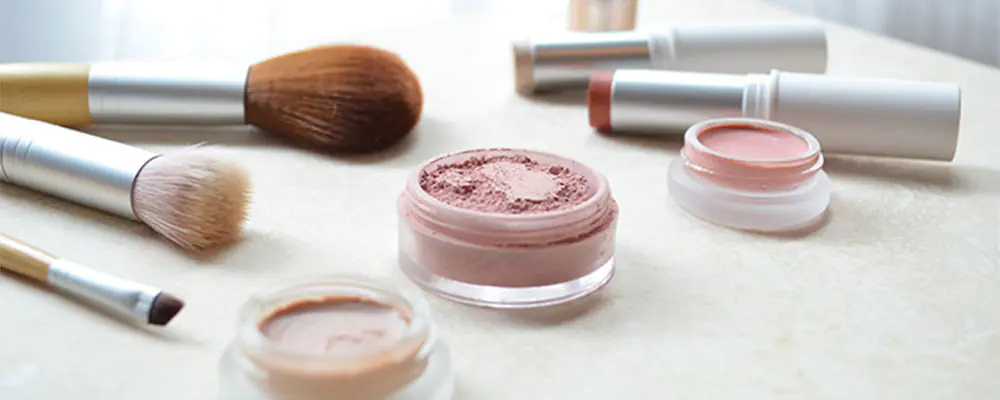
Makeup artist's opinion
We at the editorial office asked a question: what should a patient do after dermatological procedures, which are often accompanied by redness (erythema), swelling and other external manifestations that make the patient “unportraitable” for a couple of days.
At first, we addressed our question about what to do with makeup after medical cosmetic procedures to the makeup artist:

Svetlana Grebenkova
makeup artist, makeup expert, creative director of the Russian brand of decorative cosmetics for makeup artists PROmakeup Laboratory
The topic of makeup after procedures with a cosmetologist, in my opinion, is in itself very dubious. And from a common sense point of view, this is not necessary. You have undergone an expensive care procedure - give your skin the opportunity to recover and recover. But we live in the 21st century, when a woman’s visit to a cosmetologist takes place during her lunch break, and serious invasive manipulations are carried out right before important events. And the need for makeup appears at the stage that completes any aesthetic procedure.
Until recently, there was a theory that after cosmetic procedures you can only use mineral decorative cosmetics, and dry ones, in the form of powder. There is logic in this: the skin breathes, the recovery process is not disrupted, the mineral powder is absolutely inert to our skin and there is no reaction, a protective layer is created from dirt and dust to get home, say. This is not the first year that my work has been directly related to the production of decorative cosmetics, and I do not believe in the strong beneficial effect of mineral powder; rather, it is a product from the “do no harm” series, which is very relevant in the situation we have proposed.
But any dry product is always aesthetically inferior to a liquid one, and if the task is to create a beautiful, albeit light, minimal makeup, then, of course, you can’t do without foundation. A classic foundation is an emulsion, direct or reverse. To understand which of them is the most suitable after leaving a cosmetologist, you need to remember what the procedures are.
Invasive skin care techniques all leave a wound surface on the skin to one degree or another. Its depth and area differ greatly depending on the doctor’s manipulations, but the meaning does not change. It is advisable to avoid products based on inverse emulsion, fatty creams, which will create a moisture-proof layer on the surface of the skin, and the hydration process will be greatly increased. When the process of skin restoration and epithelization begins, there are no longer any such restrictions on makeup. In the first days after the procedures, it is better to give preference to products based on direct emulsion and cream-gel foundations. Conscientious manufacturers of decorative cosmetics today do not use comedogenic ingredients, and by default we are not talking about products that clog pores (the most common myth among women, due to which they are afraid to use decorative cosmetics after cleansing, for example). Although in fairness I cannot help but mention that the topic of comedogenicity of cosmetics is very complex and controversial.
How can you determine in the field whether your emulsion is direct or reverse? The first, like the cream-gel, will dissolve in water, the reverse emulsion will be resistant to it.
To complete your makeup, I would recommend using only a fixing eyebrow gel, mascara and lip product, but blush, especially pure and bright shades, almost always contain organic pigment, and it is better to avoid using them at first.
I thank Ekaterina Klyshinskaya, head of the research and production department of AV-Tower LLC and director of ROS Chemistry, Ph.D., for her help in preparing the material. Alexey Prokopov.

Doctors' opinion
After listening to the opinion of one of the leading makeup experts, we turned directly to doctors who practice extensively and often invasive, traumatic methods of correction and who are accustomed to observing the rules of asepsis and antisepsis.
When do you recommend that patients start using decorative cosmetics and after what procedures do you categorically prohibit it?

Andrey Vladimirovich Prodius
cosmetologist, dermatologist, Center for Aesthetic Medicine “Kamerton”
First of all, I recommend that girls with problem skin refrain from excessive use of decorative cosmetics. For example, for patients after cosmetic cleansing or if there is a tendency to develop rashes (acne or allergic). I advise them that it is better not to use such means without a special reason. I always see that the skin process takes longer and is more difficult if such patients apply foundation in large quantities or powder.
I also always recommend a “light” period after invasive procedures such as laser resurfacing, Infini, dermaroller and even chemical peels. I attended seminars on the use of cosmetics in cosmetology based on natural minerals, etc., but it was not convincing enough. In other cases, I do not focus on these issues.

Gintovt Elizaveta Alekseevna
Candidate of Medical Sciences, dermatovenerologist, cosmetologist
The correct rehabilitation period is the key to success in obtaining maximum results from the procedures. The ideal option: do not touch anything, do not apply anything, do not swim, do not sunbathe, in general, a protective regime. But the modern world dictates that a woman should look beautiful 24 hours a day. So, when can you use decorative cosmetics?
If contour plastic surgery, biorevitalization, or botulinum therapy have been performed, you can apply special correctors with an antiseptic effect, such as those available on the market (pharmacy and professional lines). Procedures after which there is swelling and redness, for example, rejuvenation using a vascular laser, then I do not encourage the immediate application of cosmetics. If this is fractional photothermolysis (on the Fraxel device, it is also called Friday Fraxel), then you can use decorative cosmetics the next day, since the damage is delicate (of course, depends on the selected parameters), after an ablative effect (radiofrequency or CO2 laser) approach to each is individual and depends on many factors, including the patient’s discipline.

After injection and laser procedures, I allow you to apply makeup the next day. There are always exceptions, basically every second person who needs to immediately hide the traces of interventions on their face. In this case, at the earliest in 2–4 hours, with the condition of additional treatment of the facial skin with an antiseptic before bedtime. I categorically do not allow it after thread lifting and ablative laser resurfacing.

Chirkova Olesya Alekseevna
cosmetologist surgeon, deputy head of the International School of Professional Training for Cosmetologists.
Should patients be allowed to wear makeup after procedures? For some patients, this is a “matter of life and death.”
For a cosmetologist, the answer is almost always clear and sounds like “No,” however, it is worth saying that this only applies to non-professional products. Most cosmetologists are loyal to camouflage professional products.
In my clinical practice, I use several camouflage products, varying in density and texture. My answer is yes!"

Lebedeva Natalya Vasilievna
cosmetologist, assistant at the Department of Dermatovenerology, St. Petersburg State Medical University named after. I. P. Pavlova
I allow makeup for 2–3 days, but I absolutely do not allow it after CO2 polishing, removal of large tumors (more than 0.5 cm), or after mid-peelings. When working with vessels, it is permissible to apply makeup after 12 hours.

Belova Natalia Ivanovna
cosmetologist, dermatovenerologist, head. cosmetology department
I try to give only viable advice: if the patient decides to wear makeup, he will certainly do it. What you need to strictly warn about: you cannot use palettes with foundations from which the product is taken with your fingers, this is a “microbial hostel”, and you cannot wear makeup for at least 6 hours after injection and invasive procedures. During this time, the first processes of epithelization will begin, and the risk of infection remains, but is somewhat reduced.
Caring for problem skin is always particularly difficult. It is difficult to get rid of numerous rashes, post-acne, greasy shine, and enlarged pores. To effectively mask problems, you will also have to make a lot of effort. A good option, recommended by many cosmetologists, is to perform a course of peelings. After the procedures, be sure to properly care for the skin to help the recovery process. Doctors often prescribe Christina post-peel foundation to mask problem areas, dry, heal rashes, and protect the skin. Let's consider the strengths and weaknesses of a professional special-purpose tool.
general description
Christina's foundation for post-peeling skin care is the fifth step in the intensive cleansing program of the Rose de Mer line. The substance has a dense texture, tonal effect, antioxidant, soothing effect, and contains UV filters. The product is packaged in classic 20 ml jars.
The basic components that ensure the effective operation of the substance are:
- zinc oxide (UV filter, has an astringent, antiseptic effect, normalizes sebum secretion);
- talc (mattifies, softens the surface, provides a velvety effect, maintains the absorbent properties of the substance, helps visually mask imperfections when focusing attention);
- red clay (masks defects, dries out imperfections);
- alaria extract (powerful antioxidant effect);
- jojoba oil (regeneration, sun protection, natural light tonal effect);
- shea butter (regeneration, moisturizing, antioxidant, UV protection, natural support for tonal effect);
- rosehip oil (moisturizing, anti-inflammatory, decongestant effect);
- tocopheryl acetate (nutrition, softening, antioxidant protection);
- bisabolol (soothing properties);
- retinyl palmitate (softening the stratum corneum, lightening age spots, post-acne, stimulating tissue renewal);
- caprylic triglyceride (barrier to moisture loss).
The cream also includes plant extracts, elastin, collagen isolated from marine life, deionized water, carnauba wax, titanium dioxide, benzophenone, octyl methoxycinamate, and other components to maintain the functional qualities of the substance.
Indications, effectiveness of use
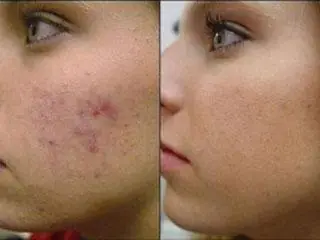
As the name suggests, post peeling cover cream from Christina is intended for use after peeling. The product provides:
- camouflage problem areas (acne, scars, dark spots from acne, hyperpigmentation, wrinkles, post-peeling peeling);
- UV protection;
- calming, nutrition, tissue hydration;
- additional antiseptic, regenerating effect;
- antioxidant protection.
Important! This option is best suited for oily skin with obvious problems (rashes). The cream is also effective for combination, normal and sensitive skin. When used on dry, flabby surfaces, the condition of the tissues may worsen due to the dense texture and drying effect of the product.
As a result of using post-peeling protective foundation from Christina, you can lead your usual lifestyle during exfoliation procedures and during rehabilitation after interventions. The face looks as aesthetically pleasing as possible, is protected from adverse effects, and additional skin care is provided.
Rules of application
Post-peeling foundation from Christina is recommended for use after deep peelings and other active cosmetic procedures with a noticeable rehabilitation stage. The substance can be used daily on a regular basis to camouflage and protect the skin of those who are dissatisfied with the condition of the skin (excessive rashes).
It is better to coordinate the scheme of use of the foundation product with the treating cosmetologist. Typically, this option is prescribed for use during the rehabilitation period after aggressive procedures. Start using the product immediately after performing Rose de Mer peeling (when carrying out procedures with other substances, the timing will be determined by the cosmetologist).
The cream can be used for any skin type. Regular use is suitable for oily skin; for dry, flabby, sensitive skin - only as post-peeling care prescribed by a doctor.
The product is distributed in any convenient way: with fingers, sponge, brush. Before application, it is recommended to place a sufficient amount of the substance in the palm of your hand. The thick cream softens under the influence of heat, making the product easier to apply evenly.
To obtain a thin layer of foundation, it is better to use your fingers. Using your hands will help you distribute the substance more evenly and achieve a natural effect. A brush or sponge is used to create a dense base. The smears are placed carefully. It is important not to injure delicate tissues.
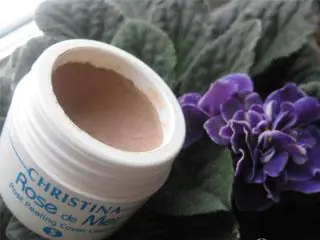
The tonal cover product Christina is available in a single color. In the jar the product looks dark and often “scares” consumers. During application, the substance has a reddish tan tint, but quickly turns red and adapts to the natural skin tone.
For a very pale natural color of the integument, the option may be truly dark.
Christina foundation cover cream is applied only to previously prepared skin. Before using the substance, you need to wash your face, treat your skin with toner, and apply a light moisturizer.
To remove foundation, regular washing with a light cleanser (gel, foam) is not enough. Makeup removal is carried out using a specialized composition with a delicate effect. The use of aggressive substances and excessive skin friction are excluded.
Purchasing a product
You can buy post-peeling foundation from Christina in many online stores specializing in the sale of professional cosmetics. A 20 ml jar of the product sells for 2800 rubles. To purchase, it is recommended to contact official dealers, sellers with a positive reputation. This will protect you from purchasing counterfeits.
Photos before and after
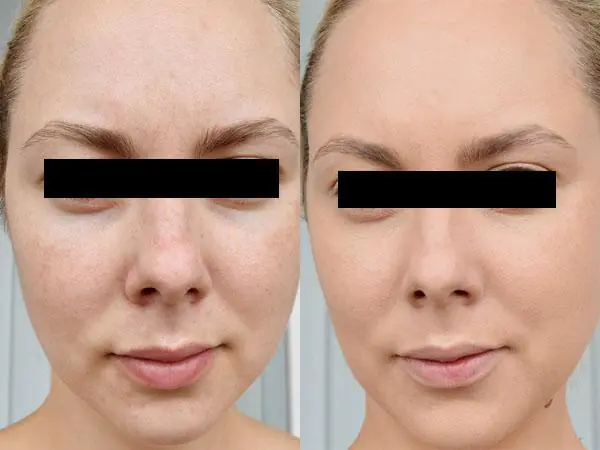
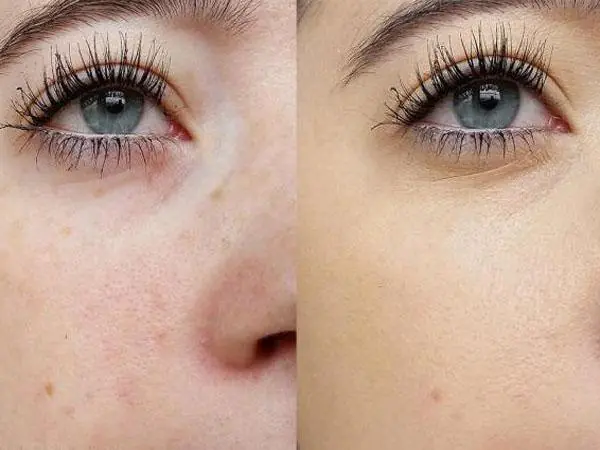
Precautionary measures
There are practically no contraindications to the use of post-peeling foundation from Christina. Avoid the substance if you are allergic to the components of the product. Do not use the product for open skin lesions (scratches, wounds, as well as burns, irritation).
You can mask the inflammation present on the skin without hesitation. When using the cream as post-peeling (part of rehabilitation) care, they are guided by contraindications to the basic procedure (exfoliation, other effects), and take into account the recommendations of the cosmetologist who performed the intervention.
There are no side effects when used correctly. The main requirement is to exclude allergies to components. To do this, it is recommended to analyze the existing individual reactions of the body and conduct preliminary testing of the product (application to a hidden area of the body to control possible negative manifestations).
Attention! If the cream is used incorrectly, excessive drying of the skin and clogging of pores may occur. This can be prevented by applying a protective product to skin previously moistened with a special product, avoiding regular use of Christina post-peeling foundation for dry skin types, and thoroughly cleansing tissues of makeup.
Advantages and disadvantages
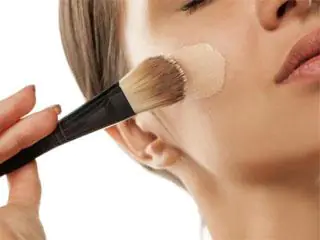
The advantages of Christina foundation for post-peeling care are the versatility of the product: the substance is used by owners of any skin type to mask problems, protect against adverse factors, and provide additional skin care.
This option can be used situationally or on a regular basis.
The disadvantages of the product are the need to comply with the principles of using the substance. If used incorrectly, complications may occur. Obtaining a beneficial effect depends on the nuances of using the product. The option has a high price. Many consumers consider it inappropriate to purchase such a cream for short-term use.
Opinion of cosmetologists
Doctors use Christina cosmetics in their work. The foundation for post-peeling care is part of the Rose de Mer series, complementing the popular coral exfoliant. This option is used when performing the procedure and is recommended for home use.
The cosmetologist recognizes the beneficial effects of post-peeling care from Christina.

The cosmetologist recommends post-peeling care Christina.

The cosmetologist recommends an option, but pays attention to the nuances of the substance.

Patient reviews
Christina's post-peeling foundation is used for care after exfoliation procedures and in everyday life. They like the option, consumers see a positive result. Christina's protective cream is convenient and versatile, which is also important.
Positive opinion about Christina foundation for post-peeling care during use after the procedure and on a regular basis.

The consumer finds the universal version of the substance convenient.

The consumer has been using the cream for a long time and likes the result, but there are some nuances.

Useful videos
Review of foundations.



